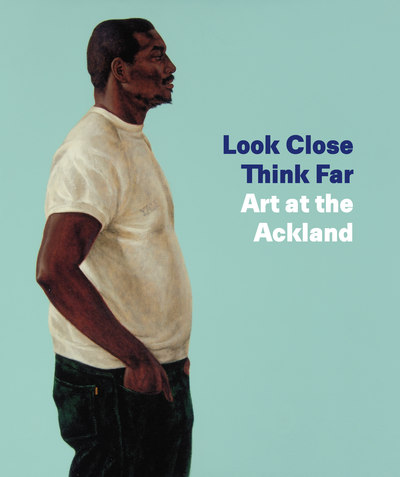- EAN13
- 9781913645267
- Éditeur
- Paul Holberton Publishing
- Date de publication
- 19 août 2022
- Nombre de pages
- 320
- Dimensions
- 26 x 21,6 x 2,4 cm
- Poids
- 1200 g
- Langue
- fre
Look Close, Think Far, Art At The Ackland
Nisbet Peter
Paul Holberton Publishing
Prix public : 45,00 €
This richly illustrated volume introduces one of America’s finest university art museums – one whose directors, curators, donors, and patrons have left a remarkable legacy, a museum collection that encourages us all to “look close, think far.” The selection of over 280 highlights is presented with brief commentaries and an essay that traces the growth of the Ackland Art Museum’s outstanding collection. The Ackland Art Museum at the University of North Carolina at Chapel Hill is one of the United States’ most distinguished public university art museums. Founded in 1958, it now houses over 20,000 works of art, covering some 5,000 years of cultures from around the globe. “Look Close, Think Far” is the tagline of the Ackland, informing everything from the dynamic and varied program of special exhibitions to ambitious interpretation, education, and outreach activities. It applies especially strongly to the museum’s extensive permanent collection. Although an integral part of the oldest public university in the United States, the Ackland is a relatively young institution. Now approaching its sixty-fifth year, it has become the proud steward of over 20,000 works of art from an impressively broad range of world cultures and time periods. The Museum is known for its special strengths in art of the European tradition, with very strong holdings in prints and drawings; the arts of Asia, and especially China, Japan, and India; a small but fine collection of classical art from Africa; and recent and contemporary art. This publication showcases a cross-section though the diverse collection, with 283 works, giving an impression of the Ackland’s permanent collection that is true to its character, representative of its breadth, and indicative of its quality. The essay gives special attention to the early stages and the less obvious, more idiosyncratic moments that have contributed to the Ackland’s personality and individuality. The approach taken by the editor Peter Nisbet, deputy director for curatorial affairs at the Ackland, differs from most conventional volumes of museum collection highlights in several refreshing ways. Instead of separating works along the lines of curatorial departments, the arrangement emphasizes the unity of the collection by merging works from different cultures. These are presented in a largely chronological sequence, but one that surprises by starting with the present and extending back in time. Within this order, works of art are deliberately paired across individual page openings, to stimulate visual attention, reflective thinking, and sometimes maybe just a smile.


















